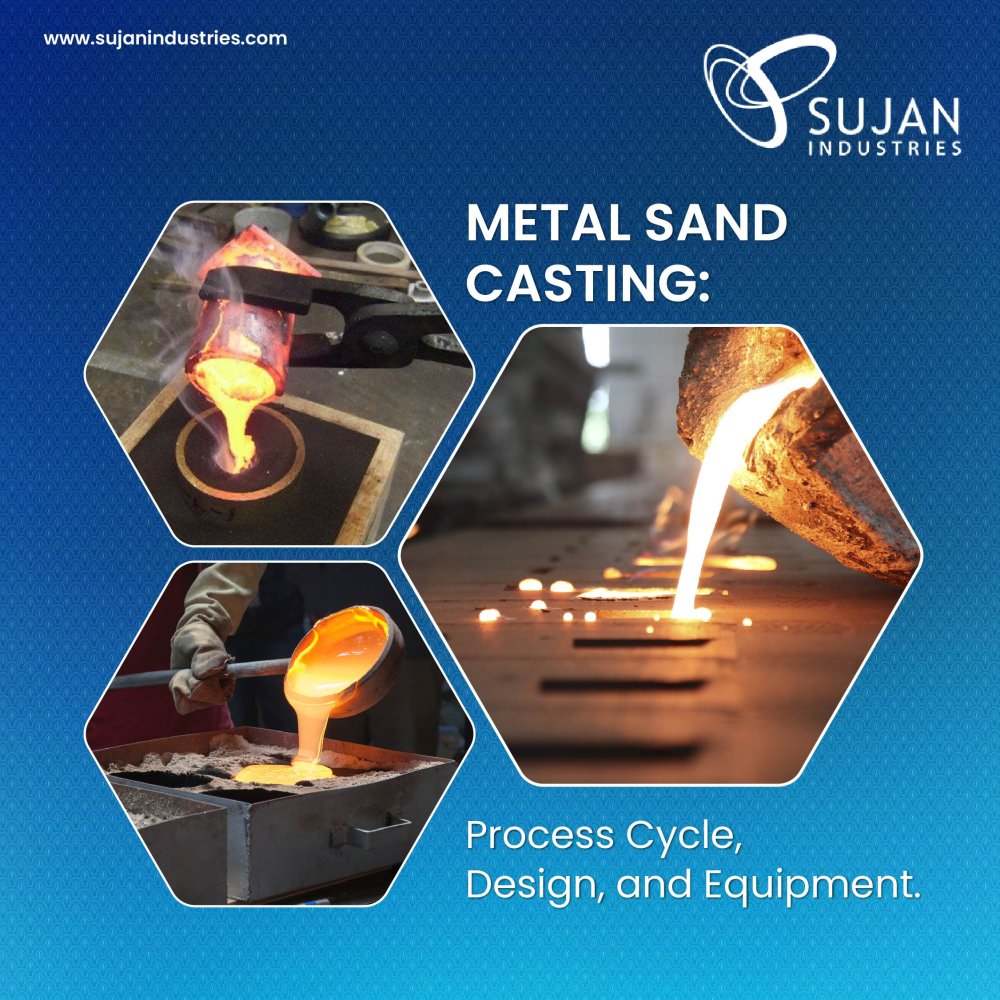
When it comes to the component manufacturing industry, metal sand casting is one of the most popular processes in the production of steel, iron, and aluminum parts. In fact, it’s extensively used in the steel foundry industry, where large and complex parts are required. In this blog, we’ll discuss the casting process cycle, the design, and the equipment used in the process.
Let’s start with what the process entails.
It’s a casting process that involves pouring molten metal into a sand mold. It begins with the design of the pattern or model that will be cast into the said mold. The pattern is typically crafted out of wood, metal, or plastic and must be an exact replica of the final product in terms of dimensions and form factor. Once the pattern is complete, it is placed in a flask, and the sand is packed around it to create a mold.
Typically a mixture of silica sand, water, and clay, the sand is packed tightly around the pattern, which, once set, is then removed, leaving behind the mold cavity. In the next metal casting step, the cavity is then prepared for the pouring of molten metal, which is done by heating it to a specific temperature and coating it with a refractory material that prevents the metal from sticking to the sand.
After the molten metal has been poured into the cavity, the metal is allowed to cool and solidify inside the mold. Once it cools down, the mold is broken open, and the casting is removed. Lastly, the casting is cleaned and finished to the required specifications.
In a nutshell, the sand casting process can be broken down into several stages, including:
Each stage requires specific equipment and expertise to ensure that the final product meets the required specifications.
Read More:- Steel Casting Process: Different Methods To Manufacture Castings
As for the tool requirement, pattern-making involves the use of woodworking tools and CNC machines for the creation of patterns and models. During mold preparation, engineers use sand mixers, molding machines, and other equipment to create the mold cavity. The melting and pouring stage extensively requires furnaces, ladles, and pouring equipment to handle the molten metal.
Cooling, being an essential part of the metal sand casting process, is critical to control the cooling rate to prevent defects in the casting. Finally, the finishing stage requires sandblasting, grinding, and other equipment to achieve the required surface finish and dimensional accuracy.
In the foundry industry, sand metal casting is utilized extensively to produce large and complex components such as gearboxes, engine blocks, machinery assemblies, and structural components. The process is also used by stainless steel casting manufacturers in India to produce high-quality stainless steel castings for a variety of applications.
The design of sand castings mold is critical to the success of the manufacturing process. It must be designed to allow for the proper flow of molten metal, as well as the proper cooling of the part after it has been cast. It is essential to ensure that the design incorporates appropriate wall thickness and draft angles to allow for easy removal of the finished part.
The first step in designing a metal sand casting mold is to create a pattern that is the exact shape and size of the final part. The pattern is used to create a cavity in the sand mold, which will be filled with molten metal, and must be designed with enough draft angles to allow for easy removal from the mold, and with enough detail to ensure that the final part is accurate and free of defects.Moreover, gates and risers must be present in ample amounts in the mold to allow for the proper flow of molten metal and to prevent defects such as porosity and shrinkage.
Also Read More:-Steel Casting, Sand Metal Casting, And Steel Foundry: What Is The Difference?
The sand casting process is a popular and widely used method for producing components and products made from metals such as steel, iron, and aluminum. The process requires specific equipment and expertise at each stage, including pattern making, mold preparation, melting and pouring, cooling, and finishing.
The process is particularly popular in the steel foundry industry and is extensively used by stainless steel casting manufacturers in India to produce high-quality stainless steel components for various industries.We at Sujan Industries are the providers of quality sand casted parts in India, with a relentless focus on quality, reliability, and durability. Visit our website to enter into a world of precision focussed components. Or, get in touch with us to know more.